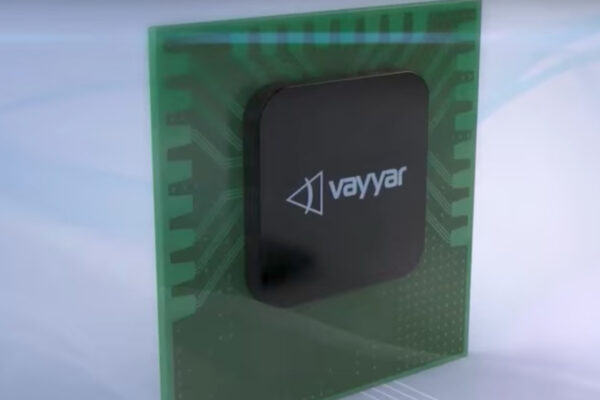
Startup utilizes ultra-wide band radar for 3D sensing
Like in conventional radar applications, Vayyar’s 3D sensors measure the distance through roundtrip propagation of the radio waves, aka known as time-of-flight (ToF) measurement. Vayyar’s engineers succeeded in adding another aspect: spatial sensing. Towards this end, the engineers are using multi-antenna arrays. The sensors measure angles through the difference in time it takes the radio waves to reach each of the antennas. The large bandwidth (ultra-wide band) allows high distance resolution while multiple antennas provide angular (azimuth and elevation) resolution, to end up with 3D imaging. The high operating frequency of around 7 GHz allows micro-doppler detection of small displacements, such as those induced by breathing and heartbeat vital signs. The company says it has achieved these capabilities through its proprietary multichannel radio transceiver RF IC and its suite of spatial signal processing algorithms. Thus, the sensors can be used for a very broad range of applications, from navigating close-distance navigation (automated parking) to detect seat occupancy and position of passengers.
Now Vayyar plans to make these sensors for the global automotive markets. “The automotive market has always been at the forefront of technical evolution, and as we are moving towards autonomous navigation, our vehicles are constantly looking for accurate and new types of information about everything that is happening both inside and outside the car, “said Raviv Melamed, CEO and CEO Co-founder of Vayyar Imaging. “We believe that this technology will provide security against obstacles outside cars, but also the possibility of monitoring the health and safety of people inside cars.”
The company calls a whole lot of potential applications: The 3D sensors scan the inside of cars and deliver real-time images of what’s going on in the vehicle. By monitoring vital signs at a distance, the sensors can warn the driver when he is nodding, or a parent when a child or pet is forgotten in the car. After accidents, 3D sensors can determine the condition of the survivors in the vehicle interior and transmit this information to first responders. In the area of autonomous driving, the sensors can generate 3D images which enable autonomous cars to determine the number of passengers in the vehicle interior, and in the event of an accident, to deploy and inflate the airbags according to the seating position and the size of the passengers.
Based on their features, these sensors can help avoid blind spots, identify obstacles, bicycles or vehicles that are too close, allow for self-sufficient parking, and provide both vertical and horizontal Information about the immediate environment of large or small vehicles. In contrast to camera systems today in use for these applications, the radar sensors are independent of environmental factors such as darkness, excessive light, or fog, providing a higher level of safety – not only for passenger cars but also for trucks and transporters, because these sensors can also be used to map the available space as well as the distribution of objects within the container, and represent the integrity of the cargo during transportation by detecting charge movements in real time.
And then there is another difference to the radar sensors used in automotive electronics: Its high degree of integration on a single IC combining RF and data processing functionalities brings costs down to the price level one typically sees at consumer products, claims Vayyar. Plus, the size of the device enables designers to use it in interior applications.
Also outside of the automotive market, the application possibilities are numerous, ranging from to contamination detection in the chemical industry to detecting water pipes and similar installations in buildings and medical applications like tumor detection.
More information: https://www.vayyar.com/
Related articles
Chipset enables innovative 3D vision solutions
LeddarTech plans two lidar signal processor ICs
Short-range radar sensors offer high accuracy, small footprint
 If you enjoyed this article, you will like the following ones: don't miss them by subscribing to :
eeNews on Google News
If you enjoyed this article, you will like the following ones: don't miss them by subscribing to :
eeNews on Google News




